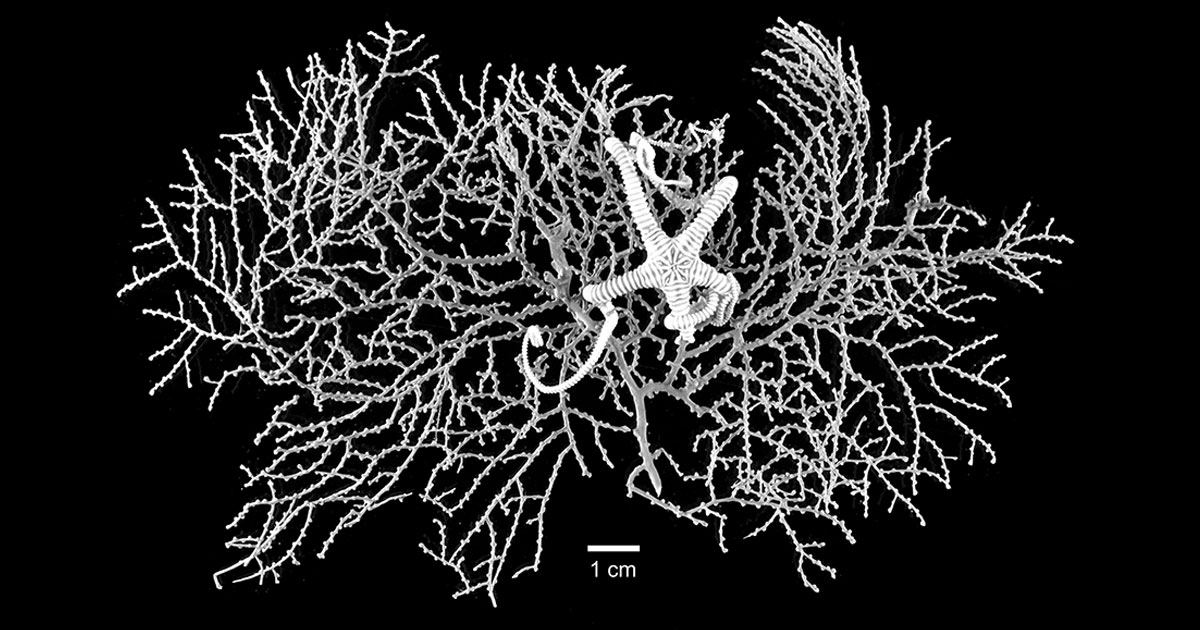
CSA Ocean Sciences Inc. Donates Valuable Collections of Invertebrates to The University of Florida and National Oceanic and Atmospheric Administration
Systematic Collection of Benthic Invertebrates from the eastern Gulf of Mexico, Atlantic Florida, and the Bahamas
Over a period of 25 years, CSA Ocean Sciences Inc. (CSA) developed an extensive and organized collection of epibenthic invertebrate specimens from the eastern Gulf of Mexico, eastern Florida, and the Bahamas to assist with their identification of organisms observed on video collected during benthic habitat characterization surveys (Photo 1). This collection of specimens was assembled during field survey efforts using rock dredges, benthic trawls, divers, and remotely operated vehicles (ROVs). Collected specimens were sorted in the field and laboratory, and then shipped to taxonomic experts for species-level identification. Each identified specimen was preserved separately in a bottle or vial of denatured ethanol and labelled with pertinent collection information, including the project number, sampling location (site and station number), collection date, water depth, species identification, and the names of both the collector and taxonomist. The CSA collection represents probably the most comprehensive assemblage of representative epibenthic organisms from this region. While at CSA, the collection was carefully organized by systematic group, using protocols that are used by University and Government museums, and it remains an invaluable source of information to the local scientific community. In September 2020, CSA donated this collection to Dr. Gustav Paulay, Curator of Invertebrate Zoology at the Florida Museum of Natural History (Gainesville, FL). The CSA collection will be cataloged and digitized, and will be available to students and researchers for future studies.
Zooplankton and Ichthyoplankton Collections from the North Central Gulf of Mexico
CSA also collected a unique time series of zooplankton and ichthyoplankton samples at four sampling sites in the northern Gulf of Mexico over a 2-year period (January 2011–January 2013). The objective of this study was to provide the data and analyses necessary to estimate ichthyoplankton species composition and relative densities at the four sampling sites, including estimates of the effects of depth, time of day, and seasonal variation (defined by sampling month) on ichthyoplankton density. Sampling was conducted at 2-week intervals (weather permitting). During each survey, sampling at each of the four study sites was conducted at dawn, midday, and dusk using a 1-m2 multiple opening/closing net and environmental sensing system (MOCNESS) (Photo 2). Each tow with the MOCNESS provided one plankton sample for three depth ranges (also termed depth bins): 0 to 100 m, 100 to 200 m, and 200 to 300 m. In addition, vertical profiles of temperature, conductivity (salinity), dissolved oxygen, chlorophyll, pressure, and transmissivity were collected with the MOCNESS to document water column conditions associated with each sampled depth bin. Samples from each depth bin were removed from the specified MOCNESS net, fixed in formalin, and then transferred to denatured ethanol as a preservative (Photo 3). Once the study was complete, the samples were archived in storage. CSA recognized that if the samples remained indefinitely in isolated storage, they would never be integrated into the scientific understanding of the region. So, in October 2020, CSA donated this extensive collection to Dr. Glenn Zapfe, a Research Fishery Biologist with the Plankton Unit of the National Oceanic and Atmospheric Administration (NOAA)-National Marine Fisheries Service (NMFS), Southeast Fisheries Science Center, Mississippi Laboratory (Pascagoula, MI). This collection will be available for students and researchers and will contribute to the Southeast Area Monitoring and Assessment Program (SEAMAP) data set. SEAMAP is a State/Federal/University program for the collection, management, and dissemination of fishery-independent data and information in the southeastern United States.
Dr. Zapfe commented to CSA, “I wanted to let you all know that we received the samples yesterday morning. They will be a great addition to the archive! Thank you all again for the effort to get the samples here for future researchers.”
 Photo 2. Deployment of the 1-m2 multiple opening/closing net and environmental sensing system (MOCNESS).
Photo 2. Deployment of the 1-m2 multiple opening/closing net and environmental sensing system (MOCNESS).
 Photo 3. Collected zooplankton/ichthyoplankton sample from one net (depth bin) of the MOCNESS sampler.
Photo 3. Collected zooplankton/ichthyoplankton sample from one net (depth bin) of the MOCNESS sampler.
Corporate Headquarters
8502 SW Kansas Ave.
Stuart, FL 34997

